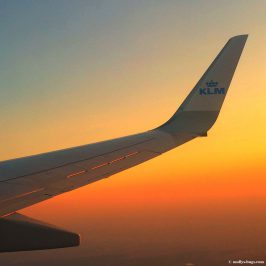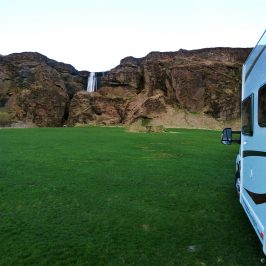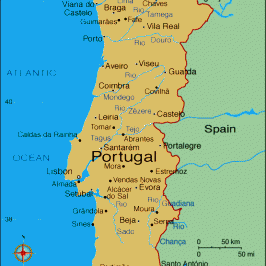Ireland is a surprisingly green island in the west of the British Isles archipelago. It is the third largest island in Europe, second only in size to Great Britain and Iceland. The weather here tends to vary greatly throughout the day. Heavy rain changed to sunshine seven times during one day of our trip. Please keep this varying weather in mind when choosing clothes for your journey – a hooded rain jacket and sunglasses could become your best friends. There is another unique feature of this island – it is a home for two states: the Republic of Ireland (Dublin is the capital) and Northern Ireland (Belfast is the capital). Therefore, before you travel, think first what part of Ireland you are going to visit as you need to apply to the proper consulate to get the appropriate visa.
Well, once the decision to travel to Ireland has been made, let us get ready for the journey step by step.
The first thing to take care of is your flight to such a remote part of Europe. Although there are no direct flights to the island, there are many options to get there making flight connections. We have chosen KLM which can take you to Dublin or Belfast at a very reasonable price. The cost of our round trip flight by regular airlines from Kyiv to Dublin was as low as USD 260 per person. Wizz Air has a low cost option to visit Belfast from Katowice, Poland, which is 950 km away from Kyiv. The cost of this option is much cheaper than KLM’s offer, but, on the other hand, you can look for discounts and promo offers to make your flight with regular airlines cheaper. If you choose a low cost option, calculate your transfer to Katowice and make sure you have a valid Schengen visa. You may also find it useful to monitor flights operated by the UK low cost airlines EasyJet to Belfast from Krakow. Comparing the prices of regular airlines vs. those of low-cost operators, please be especially attentive to detail, as low cost airlines normally charge extra fees for both your luggage and your seats. Therefore, the travel costs should be estimated very carefully, and hunting for discounts may be a good solution.
The second, and most important, thing is to get a visa. At this point, as I have mentioned before, you should decide what country you would like to visit: Ireland or Northern Ireland. If you want to visit the Republic of Ireland, you will need an Irish visa. Please remember that the Republic of Ireland is not a member state of the Schengen Agreement and requires you to get a separate visa before you travel. The list of documents in support of your visa application is fairly typical and, if you have ever been granted a Schengen visa, you will not make much effort to prepare the documents.
Some difficulties may arise when Northern Ireland is your ultimate destination. It is part of the United Kingdom of Great Britain, and you require a UK visa which may be quite difficult to get. I promise to write a post so you will know all the ins and outs of how to get a UK visa, but now it is not about that. The Irish visa does not permit you to visit Northern Ireland. There is no border between the two states on the island. In fact, you pass no extra passport control. There is one “BUT”, however. The law does not allow you to stay in the territory of Northern Ireland without the appropriate visa. I have read many posts of those who visited Northern Ireland having no visa. Nevertheless, if whatever happens and you have to present your passport, you would be deported and would never get a UK visa. The story is not as sad as it may seem. If you have a UK visa and you enter the island from Northern Ireland (meaning your UK visa has already been endorsed by the UK passport control officers and confirms that you have crossed the border of the United Kingdom), you do not need an Irish visa. In our case, we did not risk at all as we got both visas. We landed in Dublin, and the passport control took place in the Republic of Ireland. Fortunately, our trip was smooth, and we had not to show our visa. But we had to play it safe.
The third step on the way to your journey is to write a detailed itinerary. Since the island is extremely rich in tourist attractions, you should have a well-developed itinerary to explore the most attractive sites as your original plans are usually expanded as you travel and learn many new things which might have been unknown for you before.
Here comes the fourth point: make sure you have enough local currency in hand. In the Republic of Ireland, the official currency is the euro, while Northern Ireland’s currency is the pound sterling. Notably, Northern Irish pounds (banknotes issued by the Irish bank) are not accepted in Scotland and the UK, while the Scottish and British pounds work well in Northern Ireland. It was quite difficult for us to understand this tricky hierarchy of pounds, so we just exchanged money as much as we needed to spend them all by our departure from Northern Ireland. We found the staff at bureaus de change very helpful: they always inquire where are you going to spend your money and, depending on your answer, they issue Irish, Scottish, or British banknotes. By the way, bureaus de change appear to be a rarity in Northern Ireland, especially at weekends. We exchanged money at Belfast Airport on weekdays straight before 07:00 p.m. When you exchange money, you will be charged a 5% extra fee over the amount you would like to exchange. If no fee is charged, the exchange rate may be much lower. In such situations, you understand that payment cards make your life much easier.
The fifth point that is worth noting is your accommodation that should be no problem there. We personally have long been choosing quite an economical option – B&B (Bed & Breakfast) accommodation as we found it much cheaper than hotels. B&B can even offer better comfort and service. When choosing B&B, look at travellers’ rating and feedback. We prefer to use a proven service – Booking.
The sixth and the last point of your run-up to your journey is to rent a car if you would like to explore the country on your own. It is worth being aware that the island has left-hand side traffic and vehicles are right-hand drive. If you take a right-hand drive car for the first time, remember one thing we learned from a Scottish taxi driver in Edinburgh: take left and go around a roundabout in a clockwise direction (drivers understand me here), and the rest is a matter of practice. A few days of driving a right-hand drive car, you get used to it, and by the end of your trip you surprisingly feel upset that our country does not have such type of traffic. J We rent our car from Europcar. As a rule, they have a very good choice of new modern economy-class cars with low fuel consumption. If you would like to add a bit of luxury to your journey and take a bigger car, you will have to pay good money as business-class cars and SUVs are usually several times more expensive.
This is all I would like to share with those who are going to visit the Emerald Isle. Hope, you will find my next notes even more exciting. Stay with me!
You may also like:
A City of Pubs, a City of Bridges, and a City of Colourful Doors: That’s All about Dublin
The Capital of Northern Ireland
Belfast: a Harsh City of Contradiction






Leave a Reply